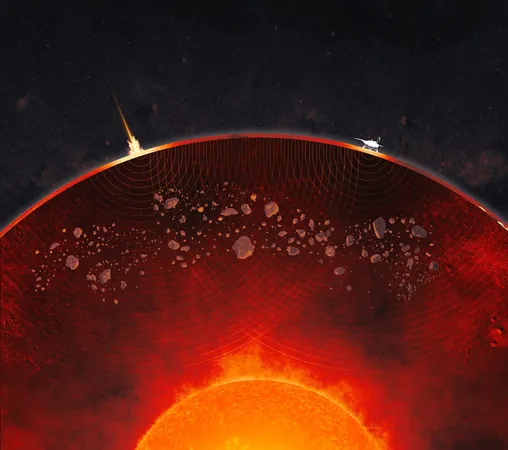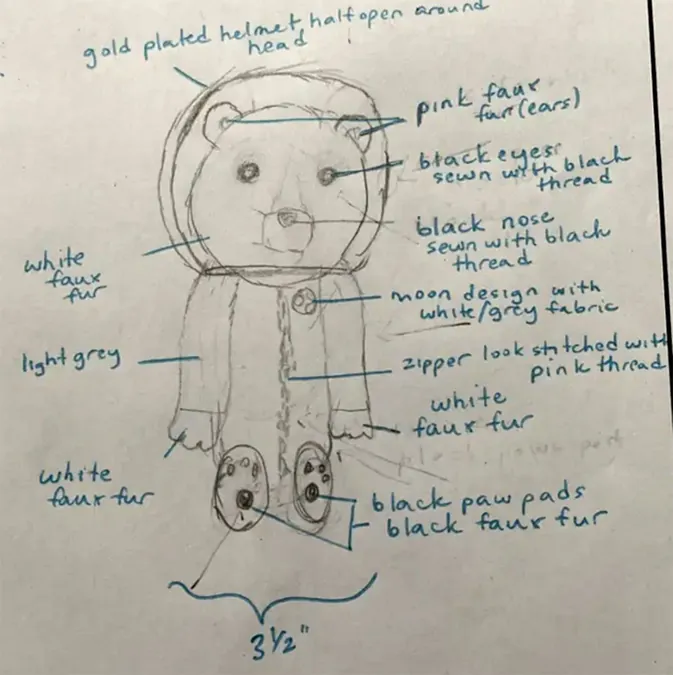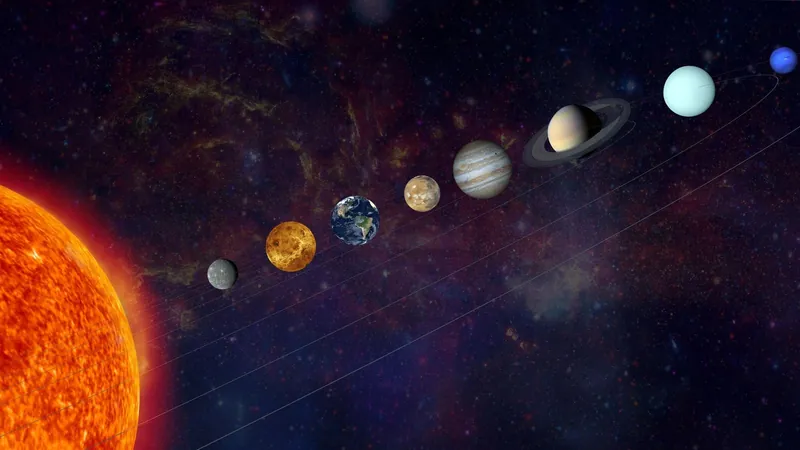
Unlocking the Secrets of Adaptive Radiation: Nature's Marvelous Evolutionary Strategy
2025-06-14
Author: Amelia
In 1835, during his transformative journey aboard the HMS Beagle, Charles Darwin made a groundbreaking discovery in the Galapagos Islands. Here, he observed an astonishing variety of finches whose beaks differed dramatically, adapting to the unique environments each species inhabited. This phenomenon, known as adaptive radiation, has become a cornerstone of evolutionary biology. Let's dive into what adaptive radiation truly is, its factors, characteristics, and some mesmerizing examples that illustrate this natural wonder.
What is Adaptive Radiation?
Adaptive radiation is an evolutionary process where a single ancestor species rapidly diversifies into a multitude of new forms, filling various ecological niches. This process leads to speciation – the creation of distinct species that develop unique adaptations, allowing them to thrive in diverse environments.
The Mechanics Behind Speciation
Speciation occurs when individuals of the same species evolve into one or more new species over time. Influential factors driving this explosion of diversity include geographic isolation, environmental variations, and the absence of natural predators. The dual forces of mutations and natural selection play a crucial role; while some mutations are detrimental, others can enhance survival and reproductive success, cementing advantageous traits in future generations.
Characteristics of Adaptive Radiation
Adaptive radiation is characterized by several distinct features:
1. Common Ancestry
All species involved originate from a single ancestral lineage.
2. Phenotype-Environment Correlation
The characteristics exhibited by organisms (their phenotypes) are closely linked to their environmental contexts.
3. Functional Physical Traits
These characteristics are critical for the organism's survival and reproduction within its specific habitat.
4. Rapid Speciation Events
New species emerge in a relatively short timeframe, showcasing how quickly evolution can unfold.
Types of Adaptive Radiation
Adaptive radiation can be classified into three main types:
1. Environmental Changes
Species that adapt to changing environments can evolve into new forms suited to occupy newly available ecological niches. For instance, after the extinction of dinosaurs, mammals swiftly diversified into various ecological roles.
2. General Adaptations
When a species develops a novel characteristic, it can expand into new territories. The evolution of flight in birds is a clear example, allowing them to inhabit various ecosystems.
3. Isolated Habitats
Islands or isolated environments can foster adaptive radiation when species colonize these areas and adapt to their specific conditions, like Darwin’s finches.
Fascinating Examples of Adaptive Radiation
Now, let’s explore some stunning examples of adaptive radiation that highlight the creativity of evolution:
Darwin's Finches
The Galapagos finches, studied by Darwin himself, showcase remarkable beak variations that evolved to exploit different food sources, demonstrating adaptive radiation in action.
Mammal Diversity
In just a mere 30 million years, all current orders of mammals arose, spreading across diverse habitats, from bats taking to the skies to cetaceans inhabiting oceans.
Cichlid Fish
In East African lakes, cichlid fish have undergone explosive diversification, leading to thousands of species, each adapted to specific dietary niches.
Marsupial Evolution
Radiating from a common ancestor 130 million years ago, marsupials have developed distinct groups in South America and Australia, exhibiting varied diets and lifestyles.
The Tuco-Tucos
Rodents known as tuco-tucos have experienced rapid diversification, resulting in around 60 species scattered throughout South America.
The Evolution of Angiosperms
Flowering plants, or angiosperms, have become the most diverse group of land plants, first appearing over 130 million years ago. Their evolutionary journey showcases incredible variation and adaptability across numerous environments.
Adaptive radiation highlights nature's extraordinary ability to evolve and diversify, demonstrating the dynamic interplay between organisms and their environments. The next time you marvel at a diverse ecosystem, remember: each unique species may be the result of an intricate evolutionary dance fueled by the forces of adaptive radiation.









 Brasil (PT)
Brasil (PT)
 Canada (EN)
Canada (EN)
 Chile (ES)
Chile (ES)
 Česko (CS)
Česko (CS)
 대한민국 (KO)
대한민국 (KO)
 España (ES)
España (ES)
 France (FR)
France (FR)
 Hong Kong (EN)
Hong Kong (EN)
 Italia (IT)
Italia (IT)
 日本 (JA)
日本 (JA)
 Magyarország (HU)
Magyarország (HU)
 Norge (NO)
Norge (NO)
 Polska (PL)
Polska (PL)
 Schweiz (DE)
Schweiz (DE)
 Singapore (EN)
Singapore (EN)
 Sverige (SV)
Sverige (SV)
 Suomi (FI)
Suomi (FI)
 Türkiye (TR)
Türkiye (TR)
 الإمارات العربية المتحدة (AR)
الإمارات العربية المتحدة (AR)